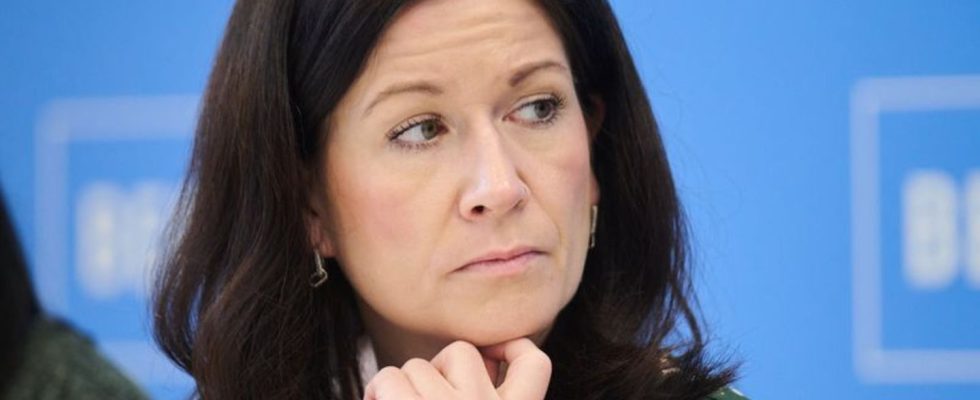From the 1960s onwards, Helmut Kentler specifically placed children with pedo criminals, some of whom had previous convictions. A new report shows that the educator’s network extended far beyond Berlin.
For decades, minors from child and youth welfare services were specifically referred to convicted pedocriminals – with the help of a Germany-wide network. A new research report from the University of Hildesheim shows in a shocking way how much larger than previously assumed the abuse network surrounding the social worker Helmut Kentler was.
Even after the turn of the millennium, the network not only tolerated, supported and legitimized pedophile positions and sexualized violence against children and young people, but also carried out violence itself, as the report presented in Berlin shows.
“The previous focus on the person of Helmut Kentler, on foster child welfare, on Berlin and on the period of the 1960s and 1970s is too narrow,” said Carolin Oppermann from the research team at the University of Hildesheim when presenting the report. The university’s second research project has shown that the “supporting and protecting” network not only included Berlin’s child and youth welfare services, but also those involved from universities, research institutes, educational and training institutions and the Protestant church.
Paedo criminals received care allowance
Kentler, who died in 2008, was head of department at the Berlin Pedagogical Center in the 1960s and 1970s and then professor of social education at the University of Hanover. Kentler believed that pedophile men as foster fathers would take better care of their charges than other foster parents. He described the practice as a “scientific experiment.”
The fact that men might want sex in return was no obstacle for the psychologist and sex researcher, who was widely recognized at the time. The pedo criminals even received care allowance. Kentler was later not prosecuted because his actions were time-barred.
In addition to Berlin, the report also names Göttingen, Hanover, Lüneburg, Tübingen and Heppenheim as central hubs for the structural abuse of power. The actors either perpetrated sexualized violence, actively enabled it or knowingly tolerated it. According to the report, the perpetrators who perpetrated sexual violence were almost exclusively male who held highly prestigious scientific or educational positions. Some of them worked at the Göttingen Pedagogical Seminar and in the Lower Saxony state youth home. According to the researchers, Göttingen was a kind of “original hub” where those involved developed their “supposedly ‘reform-oriented ideas'”.
The suffering of those affected is great
The report is based on conversations with those affected, contemporary witness interviews, documents and file analysis. It is the second reprocessing project at the University of Hildesheim. The first report was published in 2020. In total, the state of Berlin has commissioned three projects on the abuse scandal through the Senate Department for Education, Youth and Family.
A total of six affected people reported to the scientific team. Interviews were conducted with five of them. Two of them were 5 years old when they were admitted to the foster home, the other three were between 13 and 15. For a long time, those affected did not know who they could turn to, said Oppermann. To this day, some of their stories are still not taken seriously, both in family and public circles. “All those affected describe their massive fears and uncertainty about making their experiences of violence public and being defamed, hurt or rejected by existing scientific networks.”
Violence was consciously accepted
The file analysis clearly showed that one can speak of an “institutionalization of violence,” said Nastassia Laila Böttcher from the University of Hildesheim. The authorities hardly questioned the manner in which the minors were being accommodated. Rather, the “arguments, offers and wishes” of the network’s actors would have been sufficient as technical justification.
However, the needs of children and young people for help were not recognized. Rather, the young people were “instrumentalized as objects of home education,” with violence “consciously accepted,” said the scientist. The sexual abuse of children was carried out and institutionalized under the responsibility of the State Youth Welfare Office and the Berlin Senate Administration.
How can it be that no one noticed the suffering of children and young people? “There were strong signals that something was wrong in the nursing homes, which was not followed up on,” said Julia Schröder from the science team. According to the research team, in order to cover up incidents of sexual violence in public areas, they were described as isolated cases or placed in a certain zeitgeist – in the sense of “that was the way it was back then”.
No “historical conclusion” possible
Berlin’s Youth Senator Katharina Günther-Wünsch (CDU) said that the results report made it clear how important it was to come to terms with it in order to understand the mechanisms that made abuse possible. “But it also gives us the opportunity in the future to raise institutional awareness of child and youth welfare, to continuously critically review it and to further develop it.” The senator said that those known to have been affected received money as compensation. If other affected people come forward, they would also receive compensation.
The scientists made it clear that the investigation was not over and that those affected could continue to contact the team. “There is no historical conclusion,” said Schröder.
Compulsory teaching program required during studies
In response to the report, the federal government’s abuse commissioner, Kerstin Claus, said that something needed to be done to prevent such acts from happening again. “For example, specialists in social work must be well qualified, especially if they are used in child protection and the area at risk of sexual violence is involved.”
During the course of study, it is mandatory to teach what causes sexual violence, how perpetrators’ strategies work and what signals children can send.

